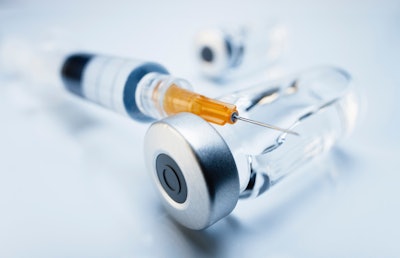At this week’s ISTA TempPack Forum, industry experts held an open discussion on mechanical testing requirements, offering both the end user and supplier perspective. Much of the talk centered around allowable product and shipper damage, as well as payload selection with some real-life examples from panelists.
Will the worst case scenario always be the maximum payload? How do you go about defining your payload for testing?
The most weight doesn’t always mean the worst-case scenario. Small payloads should also be considered. Carolyn Williamson, president at Parenteral Supply Chain, noted that having a heavier box causes people to think they will have more structural damage, which is appropriate from a supplier standpoint. “But once we get into what our specific product is and how that environment is, I think it's critical to be evaluating both min and max,” she said.
Bill Mayer, director of R&D at Pelican BioThermal, added, “If you're going to use a minimum payload, one thing to consider then is the use of dunnage material and how you're going to apply that material. Does it cause any interesting or ill effects regarding the thermal performance of the shipper?”
Carmichael Galang, divisional cold chain compliance manager, pharma at Bayer, brought up an example where they were ready to implement a dry ice shipper and had performed testing, but not at the minimum load. They loaded dry ice panels on the side of this container—approximately 200 kilos to ensure temperature stability during the trip—and it collapsed before product was loaded.
The testing had all been performed on the max load, and the design had relied to some degree on product cases stacking up to support the top of the container. “That is something that we learned internally for mechanical testing, using the min loads or less-than-full loads is actually beneficial to understand the overall integrity of the container,” Galang explained. Min load doesn’t necessarily mean a single product or case, but maybe 20 to 30% of a full load of product stacked on a pallet.
How is mechanical testing for delicate life science products in passive thermal coolers different than mechanical testing for candy bars, lawnmowers, or other consumer goods? What are the considerations specific here that might not otherwise be called out in Test Procedure 3A or other documents?
Mechanical testing is not necessarily different, but the acceptance criteria will be. As Bryan Cardis, associate sr. consultant engineer at Eli Lilly and Company, explained, “When you're developing your acceptance criteria, you're looking at it from a perspective of a validation or a verification of either system performance, product payload performance, or both together.”
You may have criteria that you don't have any minor or critical defects in the structural integrity of your thermal system whether you perform a laboratory-based mechanical study or a field-based shipping study with a physical inspection. “During reasonable, normal and customary transportation, did you notice any types of defects that would be concerning? From the end user perspective, if you execute your studies you have a focus either on the thermal system, the product, or both, and you meet your acceptance criteria. I'm not sure that it would make any difference if you were doing it for a cooler or a candy bar, or a lawnmower,” Cardis said.
Galang added, “If you look into the distribution network, your product will ship next to a box of socks or auto parts unless you have a dedicated 2 to 8°C shipment where you have a dedicated truck. With UPS or a small parcel distribution network, then there's a big mix of product in the same belly of a cargo plane. The mechanical testing from one product to another typically is going to be very similar as far as the amount of shocks, vibration, the compression that that is expected to be seen in the environment of distribution.”
The difference is product inspection—did vibration or shock change any of the quality aspects of your drug product? If pills start to break apart in bottles, do you need more cotton inserts? Was caking observed or product settling in one area, preventing a homogenous mixture in a syringe? “Those are things to consider, again, not necessarily different mechanical testing, but the inspection or the acceptance criteria would differ,” Galang said. Communicating your acceptance criteria is key. Said Williamson, “It’s our job as the end user to know the acceptance criteria and let the lab know. The test labs are the experts in executing the test standard but when it comes to whether you passed or not, that judgment is less to the test lab and more to us on what is acceptable.” Another key differentiator for life science products is temperature control. Various coolants or mock products may need to be pre-conditioned, and those protocols must be communicated with the lab. “There may be specific orientation requirements that should be considered during the testing that might affect the thermal performance or integrity of the shipper,” said Mayer.
Is there a “right configuration” to evaluate through mechanical testing? In the case of a single shipping system being used for multiple products and payload configurations—vials of different sizes, syringes, pens, etc.—does the panel recommend testing each product payload configuration, individually, or can a bracketing approach be used?
Knowledge and understanding of your product packaging configuration is going to be critical, said Cardis. Shipping risk or product risk assessments are key in helping you determine what to test. Large volume vials or devices can be quite fragile. As these are exposed to shock and vibration, how is device functionality affected? “A lot of times we do product testing, device functionality testing, or container closure integrity along with quality attribute testing,” he said.
Mayer noted that you have to look at risk-based analysis: “If you take a bracketing approach and you look at a technical justification based on risk, and look at a min and maybe a couple of selections in the center and maybe a selection on the high end for the max load, you might consider that acceptable versus the time and expense it might take to actually test 40 configurations.” Whatever you choose, ensure to document! When you’re in an audit, you want to easily be able to pull up a technical justification for why you picked your test configurations.
On acceptance criteria, is there a general consensus in industry? One customer may feel okay with a cracked shipper as long as vials are intact, while another may not accept damage to the shipper at all.
This is another topic that comes down to the end user’s discretion. If tape on the outside of a shipper breaks, one company might say it was just one edge and the box remained completely intact, so it’s acceptable. “Another company may determine that from a risk level and presentation purposes, that they don't find that acceptable,” said Williamson. “That's why I believe that the true acceptance criteria comes out of the user requirements, because I can see where two different places could have different risk-based approaches for totally different kinds of products or the cost of that product.”
Galang highlighted new guidance. “There's an amazing document produced by some good folks on this call—the ISTA passive thermal shipper OQ best practice. Appendix Four gives some examples of the acceptance criteria you have from the outer box, shell insulation, assembly panels, refrigerants, and other aspects of the mechanical testing. So it it's a good reference point.”
Obviously if leaks are discovered, it must be confirmed whether these are due to defective vial stoppers or due to mechanical testing, but in either case, this typically generates a retest to verify the root cause.
From the supplier point of view, Mayer said there are two main points on acceptable damage criteria in thermal packaging.
- For components critical to temperature control, unacceptable damage to functional pieces of the unit includes leaking coolant, leaking PCMs, damage to insulation—whether that's foam insulation, vacuum panels that have come to atmospheric pressure.
- Second, what types of failures would keep the package from arriving safely at its destination? This may be focused on the outer packaging of the shipper, and if any of the interior components can actually cause problems with the exterior of the shipper.
Should dry ice be included in mechanical testing as materials can change or become more brittle with contact?
“I've experienced with dry ice shippers that you can potentially see super cooling, and you can actually see that in your mechanical properties, so I would advocate for dry ice shippers to be tested both because you want to ensure that you're within your temperature specifications, but also you want to know that you don't see damage,” said Williamson.
Mechanical testing should be performed on packages however they are planned to ship, whether with dry ice, 2 to 8°C, or controlled room temperature (CRT). Galang noted that they freeze or refrigerate PCMs and test product so they’re getting as close as possible to the actual process. “That’s something that I would like to encourage as well when you're doing mechanical testing, do it in a conditioned way. Similar to dry ice, you want to see how the temperature changes any of the characteristics of the material, the packaging, or the devices.”
Is it necessary to use the actual product or is simulated product acceptable, especially if primary packaging for the product is kept the same with a simulated liquid used?
Placebo products are often used in testing, particularly where product is still in development. Water-filled syringes can be used, with justification that the weight and viscosity of the water is similar to the actual product. Non-active powder products may be used in place of freeze-dried products. “If there's a variance between the two, documentation is key,” said Galang. “One of the tests that we look into is the movement of the vial stoppers. So within the mechanical testing, we want to make sure that if the liquids are the same viscosity or weight.”
“Some of the product-specific type of questions come down to what is your defined acceptance criteria? Obviously, if you're doing drug product quality container closure integrity, or let's say device functionality testing, you probably want to incorporate the use of actual product to really be able to define and understand if things like the viscosity, plunger rod movement, injection times, etc.,” said Cardis. If you're doing more of a high level bracketing approach—not necessarily product quality testing, but more visual/functional testing of the primary and secondary packaging or the system itself, the actual product may not be required provided the phase of the placebo product is the same as the actual product when it ships.
























